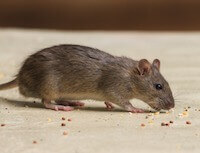WHAT DO mice LOOK LIKE

It depends on the kind of mouse you have. White-footed mice (also known as wood mice) are a common rodent found in the northeastern United States. These mice are named for their white feet which contrast with their dark gray coat. They are very small, only 3.5-4 inches long not including the length of the tail, which is often as long as the rest of the mouse’s body. They are primarily nocturnal which is why you will hear scuttering in your walls, ceilings, or attic at night. They can multiply quickly so if you do hear signs of mice, best to call in a mouse exterminator immediately. Deer mice, similar to white-footed mice, are a common rodent found in the northeastern United States. Deer mice have deer-like brown and white fur, while white footed mice take their name from the hue of their paws. Unfortunately, these names don’t help with identification since deer mice have white feet as well, and white footed mice can also be brown and white. Deer mice can be easily identified by their tails, which are always bicolored – usually half brown and half white. House mice are typically dusty gray with cream-colored bellies. Fur color varies from light brown to dark gray depending on the mouse’s location. House mice have four legs and a round shaped body. Their muzzles are pointed, and their ears are large with some hair. House mice range from 2.5 to 3.75 inches long. Their tails are usually 2.75 to 4 inches long – usually as long as their body is. They have large ears and their droppings are pointed, about the size of a grain of rice. In nature, mice prefer to eat cereal and seeds, but they will also eat insects, nuts and fruits.